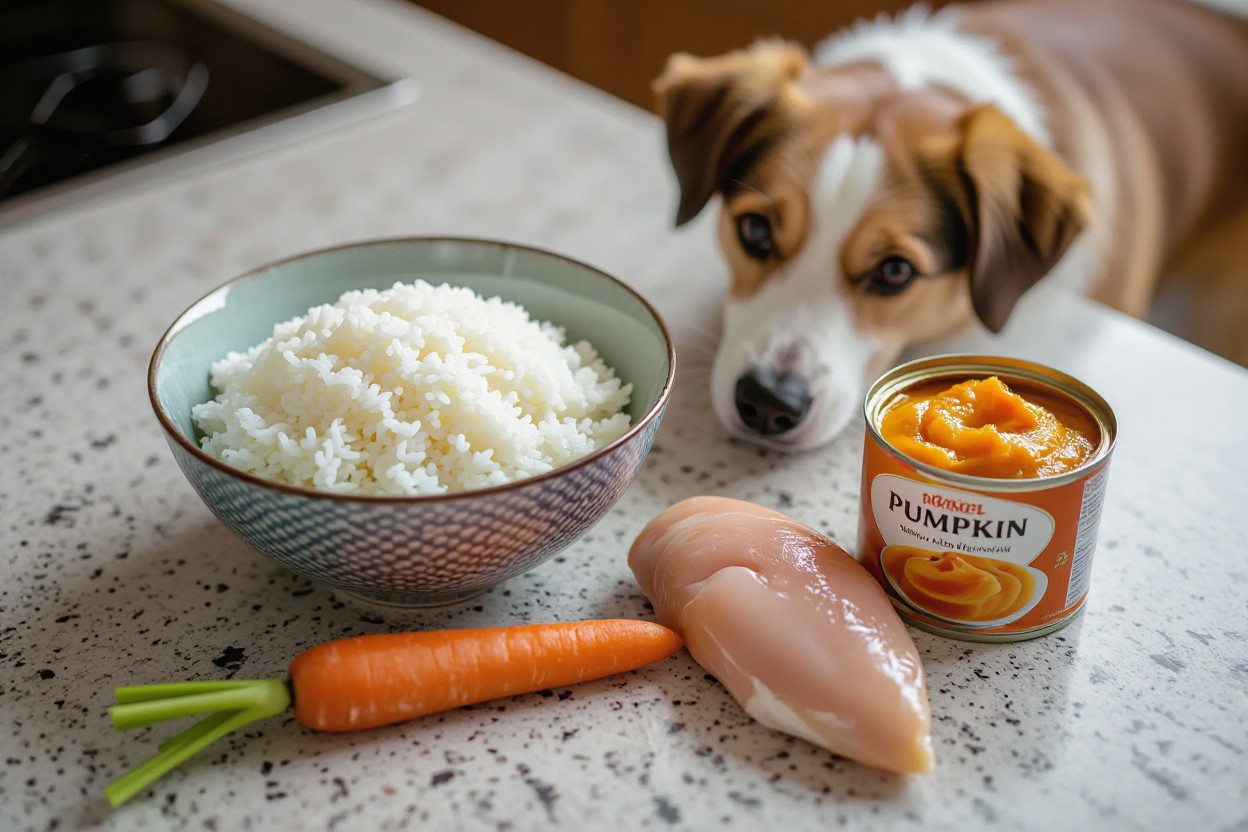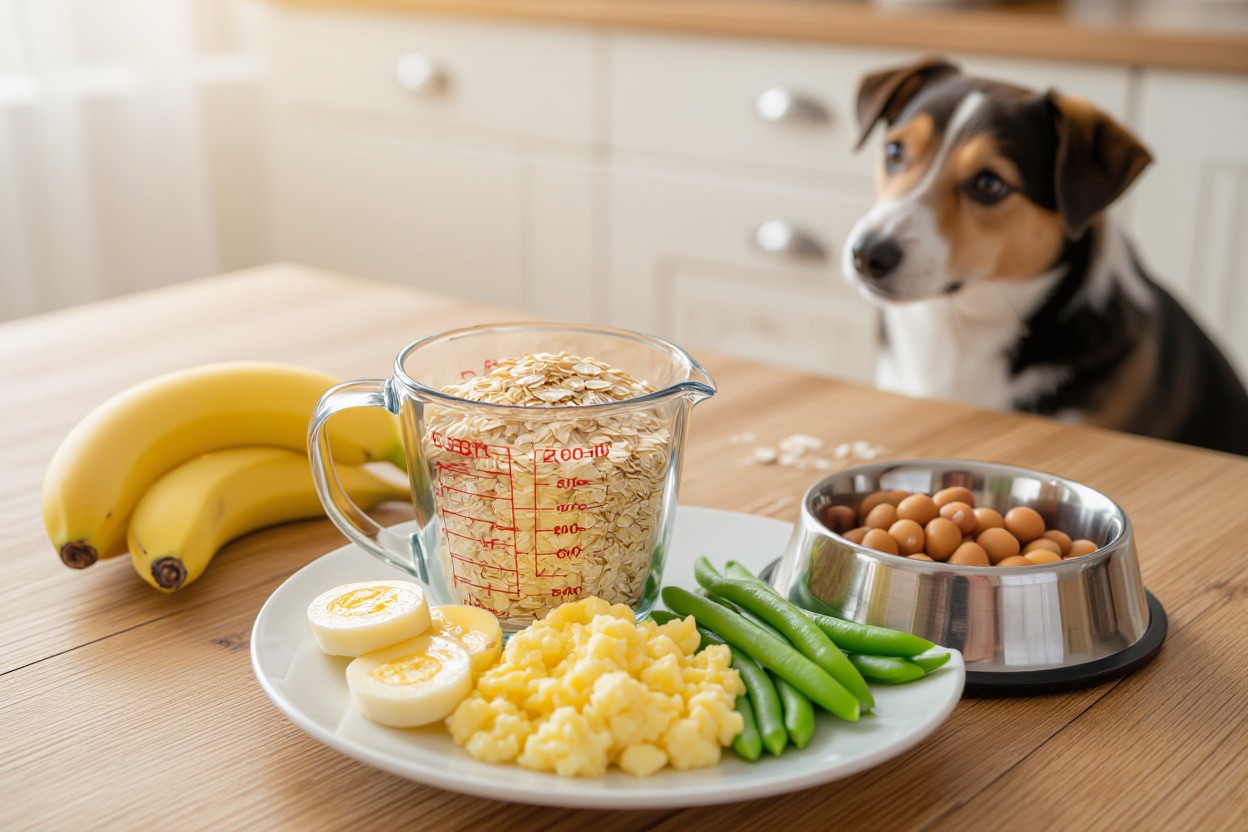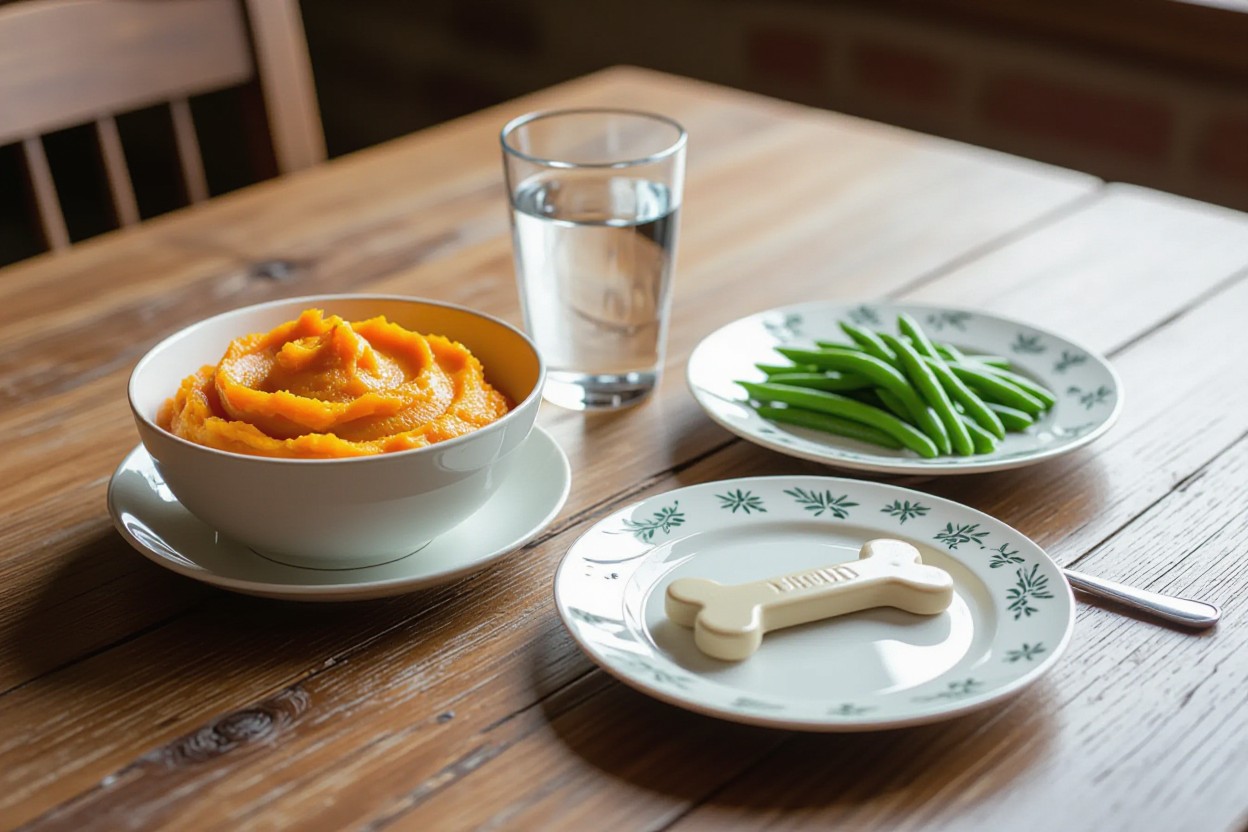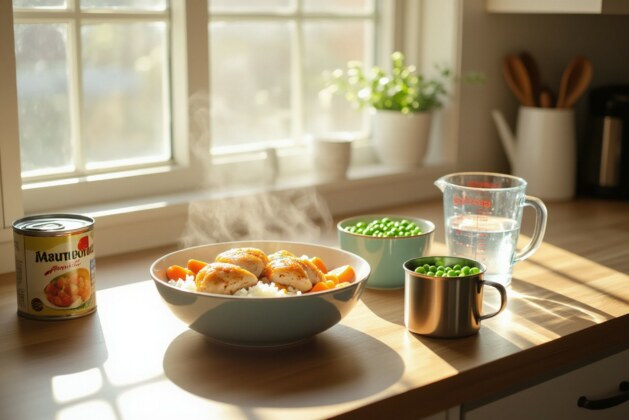Just like you, your dog needs proper nutrition every day, but sometimes you might find yourself out of dog food unexpectedly. I’ve learned that in these situations, it’s important to provide safe, healthy alternatives that won’t upset their digestion or cause harm. Avoid foods that are toxic like chocolate or onions, and instead focus on simple ingredients like plain cooked chicken, rice, or certain vegetables. Feeding your dog something suitable not only keeps them satisfied but also maintains their health until you can get their regular meals back on track.

The Pantry Power Play: Household Items That Make the Cut
When your dog’s regular kibble supply runs out, your kitchen pantry can serve as a temporary buffet. I often turn to staples like plain cooked rice, boiled chicken breast, or steamed carrots—all safe, nutritious, and easy to digest. Avoid any items with added spices, salt, or sauces. These simple pantry items offer balanced energy and protein to keep your dog satisfied until fresh food is back on the menu. Keep in mind that portion control matters; these swaps should only fill the gap, not replace a complete dog food diet long-term.
Safe Human Foods: Grains, Proteins, and Vegetables
Cooked grains such as white rice or oatmeal provide a gentle carbohydrate base that many dogs tolerate well. Lean proteins like boiled chicken, turkey, or scrambled eggs supply necessary amino acids without added fats or seasoning. Vegetables including carrots, green beans, and pumpkin are rich in fiber and vitamins; they also support digestion. Avoid onions, garlic, and anything seasoned. Combining these in small, simple meals can keep your dog’s nutrient intake balanced temporarily, offering a much safer alternative than random pantry scraps.
Snacks vs. Staples: What to Avoid and What Works
Avoid pantry temptations like chocolate, coffee, grapes, raisins, onions, and anything containing xylitol—these can be dangerous to dogs even in small amounts. Instead, focus on staples like plain cooked chicken, rice, and steamed veggies. Hard snacks such as raw bones or tough jerky without preservatives might pose choking hazards or digestive risks. Sticking to bland, whole foods found naturally in the pantry ensures you don’t accidentally introduce toxins or irritants when substituting dog food.
The difference between snacks and staples becomes clear when you look at ingredient safety and nutritional content. While many commercial dog treats contain additives or sugars that dogs metabolize poorly, household staples like plain rice or boiled turkey are free from additives and ideal for short-term feeding. Avoid processed snacks as their preservatives or flavor enhancers often include harmful substances like xylitol, artificial sweeteners, or excessive salt. Understanding these distinctions helps you make informed, safe choices rather than risking your dog’s health with questionable treats. When in doubt, bland and simple wins every time.

Nutrition in a Pinch: Balancing Your Dog’s Diet
When your usual dog food isn’t available, crafting a balanced meal with household ingredients requires attention to nutrient variety. Dogs need a mix of proteins, carbohydrates, and fats to maintain energy and health. Combining cooked meats with grains like rice or oats, plus vegetables such as carrots or green beans, can provide a temporary balanced diet. Avoid seasoning or additives, which might upset your dog’s digestion. This approach fills the gap without eliminating vital nutrients, helping your dog stay nourished while you restock their regular food.
Essential Nutrients: Proteins, Carbs, and Fats Explained
Proteins serve as the building blocks for muscles and tissue repair, with sources like lean chicken, turkey, or eggs fitting well into a homemade meal. Carbohydrates offer energy; options such as cooked rice, sweet potatoes, and pumpkin digest easily and provide fiber. Healthy fats found in fish oils or small amounts of olive oil support skin and coat health. Balance among these macronutrients keeps your dog’s energy stable and supports overall well-being during any temporary feeding adjustments.
Customizing Ratios: Adjusting Portions for Dog Size
Smaller breeds require proportionally less food with a higher concentration of nutrients per calorie, while larger dogs need larger volumes but with balanced energy density to avoid excess weight gain. For example, a 10-pound dog might need about ¼ to ½ cup of a homemade mixture per meal, whereas a 70-pound dog might eat 2 to 3 cups. Adjust portions based on your dog’s age, activity level, and breed tendencies to keep their diet properly tailored.
Beyond basic portion size, small dogs often benefit from meals richer in proteins and fats to fuel their quick metabolisms, while large dogs need controlled carbs to prevent obesity and joint strain. I’ve found that monitoring body condition scores alongside meal adjustments can help refine these ratios. Consider dividing the daily portion into multiple small meals for picky or sensitive eaters, reducing the risk of digestive upset. Consulting your vet about the right energy needs for your dog’s specific size and lifestyle helps maintain a healthy balance long-term.
Emergency Declarations: When to Get Creative
Running out of dog food can feel stressful, but moments like these turn into opportunities to get creative and resourceful. I always keep a mental list of safe alternatives like plain cooked rice, scrambled eggs, or steamed vegetables, which can provide temporary nutrition without upsetting your dog’s stomach. The key lies in avoiding harmful foods like onions, garlic, or anything processed with seasoning. Perceiving when to improvise vs. when to rush out for supplies helps maintain your dog’s health during these unexpected shortages.
Improvising Meals: Quick Recipes and Tips
When improvising, combine simple household ingredients such as boiled chicken, plain pumpkin, or carrots with some cooked pasta or rice for a balanced makeshift meal. Avoid anything with spices, salts, or fats. Here’s a quick recipe: mix one part cooked chicken with one part cooked rice and a spoonful of steamed green beans.
- Protein supports muscle maintenance.
- Complex carbs provide energy.
- Vegetables add fiber and nutrients.
Perceiving your dog’s tolerance ensures these meals stay safe and gentle on their digestive system.
Signs of Playtime: Energizing Treats and Tactics
In addition to nourishment, playtime energy requires a boost that won’t disrupt your dog’s diet or lead to overfeeding. I suggest simple, low-calorie treats like small pieces of apple or carrot, paired with engaging activities such as puzzle toys or short training sessions to channel their enthusiasm constructively. These tactics offer both mental and physical stimulation without excess calories. Perceiving the right balance between treats and activities helps keep your dog vibrant without compromising their nutrition.
Further exploring energizing treats, think about incorporating foods like blueberries or small chunks of banana, which are rich in antioxidants and vitamins but low in calories. Combining these with interactive games like hide-and-seek or basic obedience drills encourages your dog to expend energy in productive ways. This synergy between diet and playtime not only replenishes energy but reinforces positive behavior, ensuring your pet remains happy and healthy until normal feeding routines resume.

Understanding Your Dog’s Reaction: Monitoring and Adaptation
Switching your dog’s diet unexpectedly can prompt subtle to obvious reactions that signal how well they’re adapting. I keep a close eye on their behavior and digestion, noting any changes in energy levels or stool consistency. Tracking these cues helps me adjust feeding strategies promptly, whether that means offering more familiar foods or consulting a vet if symptoms persist. Dogs metabolize new foods differently, so informed monitoring is key to ensuring their well-being during dietary shifts.
Observing Dietary Changes: Signs of Distress or Satisfaction
Indicators like vomiting, diarrhea, or lethargy often point to dietary distress, while enthusiastic eating and stable digestion suggest good tolerance. Some dogs may scratch excessively or show signs of gut discomfort, signaling sensitivity to new ingredients. Positive signs include steady weight, bright eyes, and a shiny coat, all reflecting adequate nutrition despite temporary food changes.
Gradual Introductions: Avoiding Stomach Upsets and Allergies
Introducing unfamiliar foods requires patience: I typically blend incremental amounts with their regular meals over 5-7 days. This helps prevent digestive upset and gives the gut time to adjust, lowering the risk of allergic reactions or nutrient imbalances. Sudden shifts can trigger stress responses that manifest as diarrhea or vomiting, making gradual steps a safer approach.
Expanding on gradual introductions, I use a simple schedule—starting with 25% new food mixed with 75% regular kibble, then shifting to 50/50 by day three, and aiming for full transition by day seven. This gradual progression not only aids digestion but also allows me to watch for any adverse reactions like excessive scratching or gastrointestinal disturbances. In one case, a friend’s dog developed mild hives after switching too quickly to homemade chicken and rice; maintaining gradual changes would have likely prevented this. Sticking to this pacing reduces stress on your dog’s digestive system and helps maintain their overall health during temporary food substitutions.
Long-Term Strategies: Preparing for Future Shortages
Building resilience against future shortages means more than just a one-time fix; it requires a proactive approach to your dog’s nutrition planning. I recommend setting up a reliable system where you maintain an easily accessible backup supply of your dog’s preferred food, rotating stock as expiration dates approach. Regularly updating your knowledge about safe, nutritious alternatives can keep you ready for unexpected gaps. Combining preparedness with flexible thinking ensures you can maintain your dog’s health even when the usual options aren’t available, reducing stress for both you and your pup.
Stocking Up on Essentials: Creating a Food Reserve
Storing an extra two to four weeks’ worth of your dog’s favorite dry or canned food helps bridge gaps during supply interruptions. I suggest choosing cool, dry storage locations and regularly checking expiration dates to keep the reserve fresh. When possible, buy from trusted brands and consider vacuum-sealed packs that extend shelf life. Having this emergency stash on hand allows immediate replacement without rushing to find substitutes that might not meet your dog’s dietary needs, providing a buffer that supports consistent nutrition.
Exploring Alternative Diets: Raw, Homemade, and Holistic Approaches
Exploring alternative diets like raw feeding, homemade meals, or holistic nutrition adds flexibility to your dog’s feeding routine. Incorporating whole foods such as lean meats, vegetables, and grains, when balanced properly, can supplement or temporarily replace commercial foods. Some owners find these approaches improve digestion and coat quality, but balancing nutrients requires careful planning. Consulting with a veterinary nutritionist can tailor recipes that suit your dog’s age, health, and energy needs without risking deficiencies or toxicities.
Diving deeper into alternative diets reveals a spectrum of options from the BARF (Biologically Appropriate Raw Food) diet, rich in raw meaty bones and organ meats, to carefully crafted homemade recipes that use cooked proteins, vegetables, and grains. Each method demands attention to macronutrient balance, inclusion of imperative fatty acids, and avoiding harmful ingredients like onions or excessive salt. Documented cases show dogs transitioning smoothly to these diets often experience increased vitality and reduced allergy symptoms, but successful implementation hinges on precise ingredient measurement and routine health monitoring to ensure long-term benefits without unintended risks.
Final Words
Ultimately, when you’re out of dog food, I advise feeding your dog simple, safe human foods like plain cooked chicken, rice, or steamed vegetables in moderation. I know you want to avoid anything toxic or harmful, so always skip onions, garlic, chocolate, and anything seasoned. Your dog’s diet should quickly return to their regular food once you’re restocked to maintain proper nutrition. By providing a careful temporary alternative, you’re ensuring your dog stays healthy and comfortable until their usual meals are available again.





Leave a comment